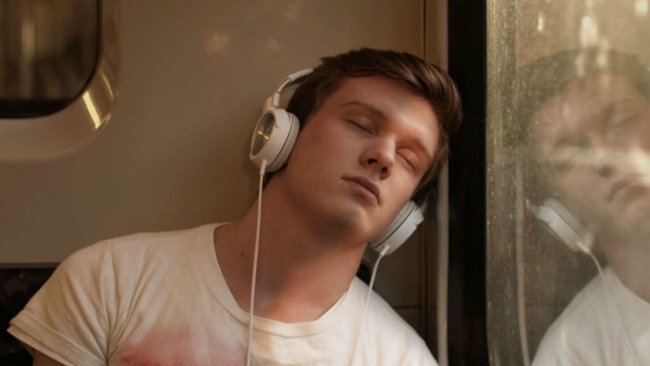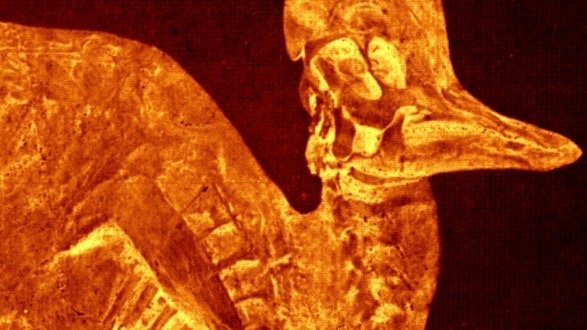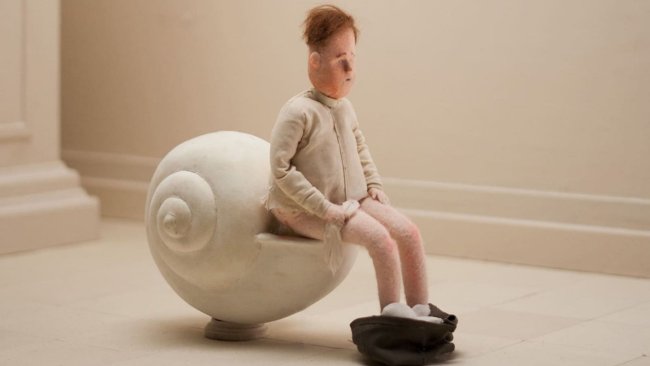What Do We See When We Look at the Sky?
[…] Koberidze accurately maps the emotional geography of these worlds thanks to an acute sense of observation. Plurality prevails on organisation, as if the film would convey a Brueghelian cosmos from within, without panoramic views.
[…] In a certain sense, there is no depth in this film, only strong emotional micro-adventures that punctuate the terra incognita of life.
[…] A sort of animist touch makes everything ordinary as well as magical. There is something primordial in this visionary cinema, for example a rhythm that recalls the one of silent movies.
Text: Giuseppe Di Salvatore

The unusual title is an invitation to imagination, and also invites us to anticipate the unusual story we will watch. The love story of Lisa and Giorgi is actually quite simple: a meeting, the attraction, an impossible second meeting because of a mysterious curse, and an ending (that I won’t spoil) which fits perfectly into the fairylike atmosphere of the film. It is definitely not the impossible love story that is unusual; it has something classical about it, with the minimalist economy of mythological tales. What is unusual are the abundant diversions that haunt the story, creating its true dramaturgic matter. So thin is the story, so curvilinear are the diversions (just like Georgian letters): they draw a plethora of non-linear paths, of circles, of repetitions. The storyteller, Alexandre Koberidze, does not seem to be interested in statements but rather appears to enjoy getting lost in the folds of daily life. In this way, he magnificently describes urban details, habits, gestures, gazes…. The town of Kutaisi doesn’t have a North and a South, but has bridges, bars, corners, undefined piazzas where children and dogs can build their own world. Koberidze accurately maps the emotional geography of these worlds thanks to an acute sense of observation. Plurality prevails on organisation, as if the film would convey a Brueghelian cosmos from within, without panoramic views.
What Do We See When We Look at the Sky? is a film of exploration, which may appear quite short for the ones who are curious and quite long for the ones who want to get to the point. There is no point in this film but life, with its multiplicity of forms, with its paths leading nowhere, and there are no problems in this film, only irresistible accidents, good and bad events that one simply has to accept. This film strongly challenges our attitude of functioning through solving problem and challenges the “functional viewer”; it delivers pure joy to the contemplative viewer. In watching this film, I remembered the contemplative “challenge of joy” in The Taste of Tea (Katsuhito Ishii, 2003): one should appropriate the mood of childhood again, where things, faces, people, and deeds occur like curious presents in the middle of a neutral Time, a time without goals save the one to live in the moment, a time under the protection of the repetition of the same. In a certain sense, there is no depth in this film, only strong emotional micro-adventures that punctuate the terra incognita of life.
The title hints more subtly at a precise distinction, between looking (at) and seeing. Even if What Do We See When We Look at the Sky? enhances the surface of things and their folds, one should not just look at things but see them, which does not really mean to see them through the light of reason or meaning, but rather see them as animated by their own souls. A sort of animist touch makes everything ordinary as well as magical. There is something primordial in this visionary cinema, for example a rhythm that recalls the one of silent movies. The characters seem to be puppets at the mercy of their destinies (or of the storyteller) and the music is extraordinarily present in commenting each scene – an arrangement that mixes traditional instruments and modern compositions, and never abandons a charmed atmosphere. Koberidze takes the visionary task of cinema seriously. What he is able to convey through scenes, such as the long one where children play football with Gianna Nannini’s «Notti magiche» or the surreal ones where a society of perfect harmony lovingly prepares a range of homemade cakes, is the power of dreaming, which often blends with the one of memory. Cinema displays the work of memory, cinema is daydreaming, and the sky we have the opportunity to look at will push us to find again the pleasure of beholding.
This article contains a third-party video. If you would like to watch the video, please adjust your settings.
Watch
Screenings in March 2022 at Kino Rex Bern and Cinéma Spoutnik Genève
Info
What Do We See When We Look at the Sky? | Film | Alexandre Koberidze | DE-GEO 2021 | 150’ | Bildrausch Filmfest Basel 2021, Black Movie Genève 2022
First published: July 12, 2021



